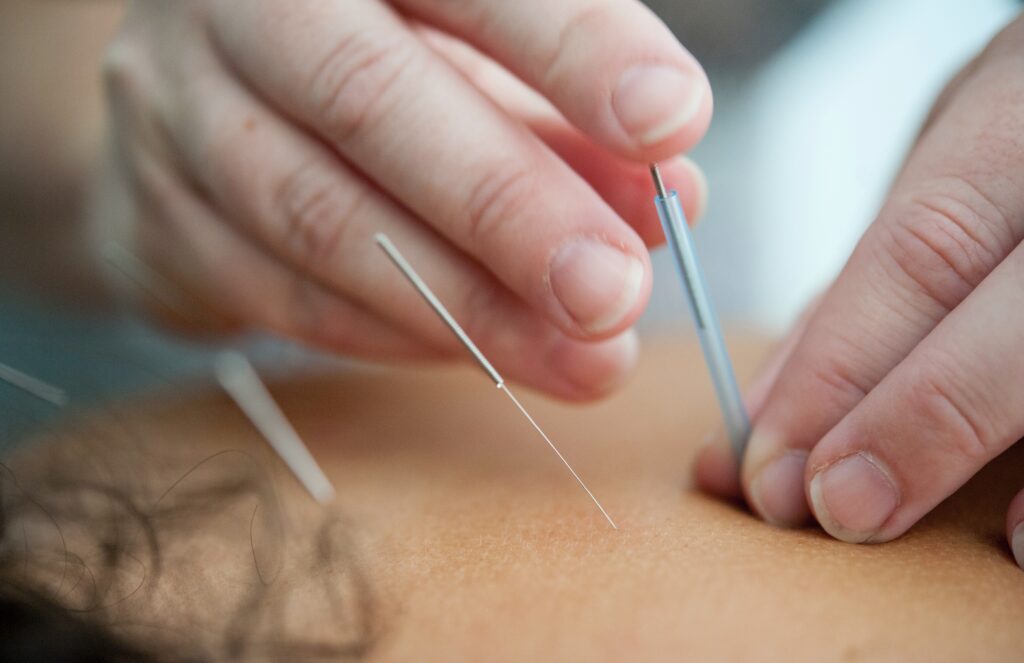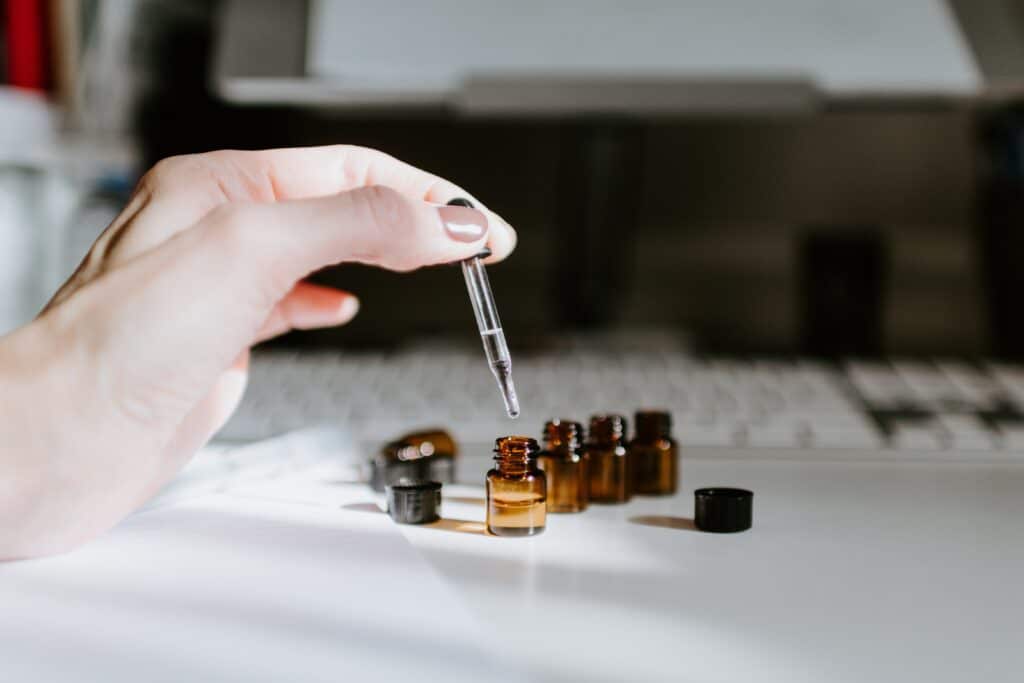Pain is such an uncomfortable feeling that even a tiny amount of it can be nerve-wracking. It doesn't matter if you are having your favorite dish or talking to a person you like, or performing a simple facial function such as yawning, laughing, etc., pain in TMJ can hinder performing all these activities.
TMJ pain or discomfort signifies a disorder or an injury to the jaw joint or muscles. Mild to periodic symptoms may improve with simple home therapy within a few weeks to months. Surgery may be preferred as the last resort in severe cases.
What is TMJ?

The temporomandibular joint (TMJ) works like a sliding joint, joining the jawbone to the skull. The joints on both sides of the face spring into action whenever you talk, chew, swallow, and yawn. If you find it hard to perform any of the actions, you may likely suffer from TMJ.
TMJ disorders induce pain in the jaw joint and muscles that control jaw mobility. Most often, it is difficult to diagnose the exact cause of a TMJ disorder. In most cases, the symptoms are largely temporary and resolve within a few weeks to months. However, some painful conditions can be worsened by certain habits or behaviors that strain jaw and neck muscles.
In the majority of cases, self-managed care or nonsurgical treatments can help manage TMJ disorders. Some people may benefit from surgical treatment if they fail conservative measures.
Signs and Symptoms of TMJ Disorders

The classic TMJ disorder symptoms are severe pain, tenderness, or discomfort around the jaw joint. The symptoms can be mild to debilitating and can be short-lived or last for an extended period. It might involve one or both sides of the face.
Common symptoms include:
- Pain or soreness around the jaw
- Pain with chewing or difficulty chewing
- Pain in the face, ear, jaw, and neck
- Clicking, grating, or popping sounds during opening or closing your mouth
- Locking of the joint
- Ringing in the ears
- Headaches
If you experience recurring pain or tenderness in your jaw or cannot open or close your jaw completely, seek medical attention. Your doctor, dentist, or TMJ specialist will discuss the possible causes and treatments for your problem.
Causes of TMJ Disorders
The etiology behind the TMJ disorders is not entirely known. The muscles and ligaments used for mouth movements connect to the temporomandibular joints, where the skull and lower jawbone meet. Various factors can contribute to muscle tension and cause TMJ dysfunction.
TMJ disorders can occur due to:
- Congenital malalignment of the jaw
- Unconscious or involuntary grinding or clenching of the teeth (bruxism)
- Mechanical injury of the jaw during sports or fall
- Various autoimmune diseases
- Dental surgeries that went wrong
- Oral infections
- Malalignment or damage of the disc between ball and socket joint formed by the jaw bones
- Maintaining poor jaw posture
- Experiencing prolonged stress or anxiety
- Inflammatory musculoskeletal disorders, such as arthritis, degenerative joint disease, gout, connective tissue diseases, can cause damage to the joint's cartilage
- Orthodontic braces may cause impairment of the joint
- Excessive chewing or overuse can cause a lot of strain on the TMJ
TMJ disorders can also be genetic, hormonal, and environmental.
Diagnosis
A healthcare professional or dentist will discuss your symptoms and do certain physical exams on the jaw to determine the cause for the symptoms. They will examine your jaw joints for pain or tenderness and listen when you open and close your mouth for clicks, pops, or grating sounds. They will check the jaw range of motion and examine if the jaw gets locked during opening or closing movements. They will also examine the facial muscles.
There is no actual test to diagnose TMD. A doctor may choose to send the patient to a medical professional specializing in jaw disorders, such as ENT, oral and maxillofacial, or a dentist, to support the diagnosis.
If the health care professional suspects a problem, they may prescribe a dental x-ray, MRI, or CT scan of the teeth and temporomandibular joint. A dental x-ray will help examine the jaw and teeth. An MRI will identify problems in the soft tissue and jaw joint's cartilage. The CT scan will show detailed images of the bones involved in the joint.
Self Care For TMJ
The pain in TMJ can affect one's ability to eat, sleep, and speak, making them feel helpless. But self-care methods can significantly reduce the TMJ pain and allow one to resume normal activities.
Here are a few self-care suggestions that may help you relieve pain in your TMJ and manage symptoms without surgery:
1. Hot or Cold Compress
Heat or ice can decrease muscle or joint pains. Heat increases the blood flow and helps relax the jaw muscles. You can apply moist heat for about 15 to 20 minutes to the painful area, two to four times throughout the day.
You can apply ice for 10 minutes, every 2 hours. It helps reduce pain and swelling.
You must use a thin towel or cloth between the skin and the compress to prevent any burns or frostbite.
2. Food

Avoid hard foods, crunchy and chewy foods – cut food into small pieces and steam vegetables. Eat soft or blended foods to help the surrounding muscles and the jaw to rest.
3. Avoid Extreme Jaw Movements
You must avoid eating food that requires opening the mouth wide. Yawning and gum chewing should be kept to a minimum. Try to avoid taking large bites of food or foods that require prolonged chewing.
4. Avoid Oral Habits

You should keep the teeth slightly apart. It will help relieve the pressure on the jaw joint. People with the habit of clenching teeth can put their tongues between their teeth to control clenching or grinding during the day.
5. Jaw Exercises
Learn relaxation techniques to help release the jaw muscles. Consult a physical therapist who can teach specific muscle relaxing exercises. Stress reduction therapy and biofeedback also help to relieve the muscles.
6. Reduce Stress
Use appropriate stress-relief techniques. Many people subconsciously clench their jaws during stressful situations. Learning stress-relief techniques such as meditation and mindfulness can reduce the wear and tear of stressful situations for their jaw.
7. Acupuncture

Acupuncture techniques are reported to relieve TMJ pain with exceptional results. Originated in eastern medicine, acupuncture suppresses pain perception in the affected jaw and facial areas.
8. Massage
A fast and cheap way to relieve TMJ pain is to massage it with index and middle fingers to slowly yet firmly stroke the painful areas.
9. Essential Oils

Some soothing essential oils such as lavender, chamomile, sweet marjoram, and clary sage provide momentary relief from the pain and discomfort of TMJ.
Other Ways To Manage TMJ Pain
When home remedies fail to produce any effect, medical treatment options may become necessary. Most of these treatments and therapies will not cure TMD, but they can give short-term relief of the pain symptoms.
Most common treatments include:
- Over-The-Counter Medications: Over-the-counter analgesics or nonsteroidal anti-inflammatory drugs (NSAIDs), such as ibuprofen, can be used short-term to alleviate pain. A physician may prescribe muscle relaxants to relax the jaw if the patient grinds or clenches the teeth.
- Mouth Guard: Customized mouthguard can prevent clenching or grinding of teeth and allow the jaw's realignment.
- Medicinal Marijuana: In states where medicinal marijuana is permitted, a practitioner may prescribe it to help with severe TMJ pain.
- Therapy: Bio-behavioral management like biofeedback, cognitive-behavioral therapy (CBT) may reduce the pain intensity.
Exercises For TMJ
Performing a few mild exercises can help ease TMJ pain. It is advisable to begin by gently massaging the painful area. It can help reduce tightness and discomfort. It also makes it easy to move the joint and the surrounding muscles.
TMJ exercises can increase the mouth opening range and are perceived to strengthen jaw muscles, stretch and relax the jaw, increase jaw mobility, reduce jaw clicking, and promote jaw healing.
1. Relaxation Exercises
TMJ pain is often caused by stress. Simple relaxation exercises can help ease the discomfort.
- Breathe in slowly, allowing the stomach to expand. Slowly breathe out, making the expiration equal to the inhalation. Repeat 5 to 10 times.
- While sitting or lying in a comfortable and supported position, contract each muscle in the body, working upwards towards the head. Then relax the muscles releasing tension from each muscle in the body.
2. Stretching Techniques
Gently stretching the jaw joint area can help with TMJ pain during a flare-up. These exercises reduce muscle and joint tension, offering long-term relief.

- Relax the jaw. With the teeth slightly separated, slowly open the mouth as wide as possible while looking up towards the ceiling. Keep the mouth in this position for a few seconds, and then slowly close it.
- Once the mouth is closed, move the jaw to the left while moving the eyes in the same direction. Avoid turning the neck or head. Maintain for a few seconds in this position, and then move back to the center. Repeat on the opposite side.
- Position the tip of the tongue on the hard palate of the mouth. Glide the lower jaw out as far as it can go, hold for 5 to 10 seconds, and then back in as far as it can go. Hold for 5 to 10 seconds in this position.
- Slowly and steadily open the mouth as wide as it will comfortably open, with the tongue in a neutral position. Wait for 5 to 10 seconds, and then close the mouth. Next, open the mouth slightly and slide the lower jaw back and forth 5 to 10 times.
- Keep a thin object, such as a pen or paintbrush, in between the front teeth. Glide the lower jaw ahead so that the thing rests in between the back teeth and front teeth. Hold for 20 seconds.
As the fifth exercise becomes easier, one can use broader objects to separate their front and back teeth.
3. Strengthening Exercises
Strengthening exercises are best when performed amidst TMJ flare-ups. Avoid these exercises during times of intense pain as they can make the pain worse.
- Set a thumb under the chin and push the chin down against it. Continue opening the mouth against the moderate force from the thumb, and then hold it open for 5-10 seconds.
- Open the mouth as wide as possible. Place the index finger between the chin and lower lip. Push inside while closing the mouth against the resistance.
Untreated TMJ Disorder
If left untreated, TMJ disorder leads to other medical ailments. The majority of TMJ victims attempt to ease the pain through self-medication. It can turn into addiction over time. Persistent pain from TMJ combined with clenching leads to sleep disturbance and insomnia. TMJ symptoms may also contribute to depression, negatively impact and deteriorate the quality of life.
Untreated TMJ disorder could also lead to malnutrition and possible eating disorders. Some patients may only consume soft foods, soups, or liquids and might even avoid eating due to the pain.
Untreated TMJ disorder could also cause the following:
- Dental Issues: Postponing TMJ treatment may lead to further dental health issues. The constant grinding may damage the enamel and fractured teeth. TMJ patients tend to overuse the unaffected side of the jaw, which causes swelling on one side of the face and asymmetrical muscle growth.
- Tinnitus: The TMJ is positioned immediately under the ears; TMJ disorder may lead to tinnitus or compromise hearing. Inner ear problems can cause difficulties with balance, resulting in vertigo or recurring dizziness.
- Jaw Problems: Chronic TMD can result in severe jaw problems, such as a locked jaw. The damaged cartilage in the jaw can result in the displacement of the jaw.
Conclusion
The TMJ disorder is prevalent and can be caused by several reasons. The pain and discomfort caused by it can be terrifying, but it is possible to reduce the symptoms through proper medical supervision. There are several self-care remedies and exercises to reduce discomfort.
If conservative measures fail, surgery may be the last treatment of choice. Seeking professional help for TMJ disorder is very important since it can worsen or lead to other severe complications if left untreated.
